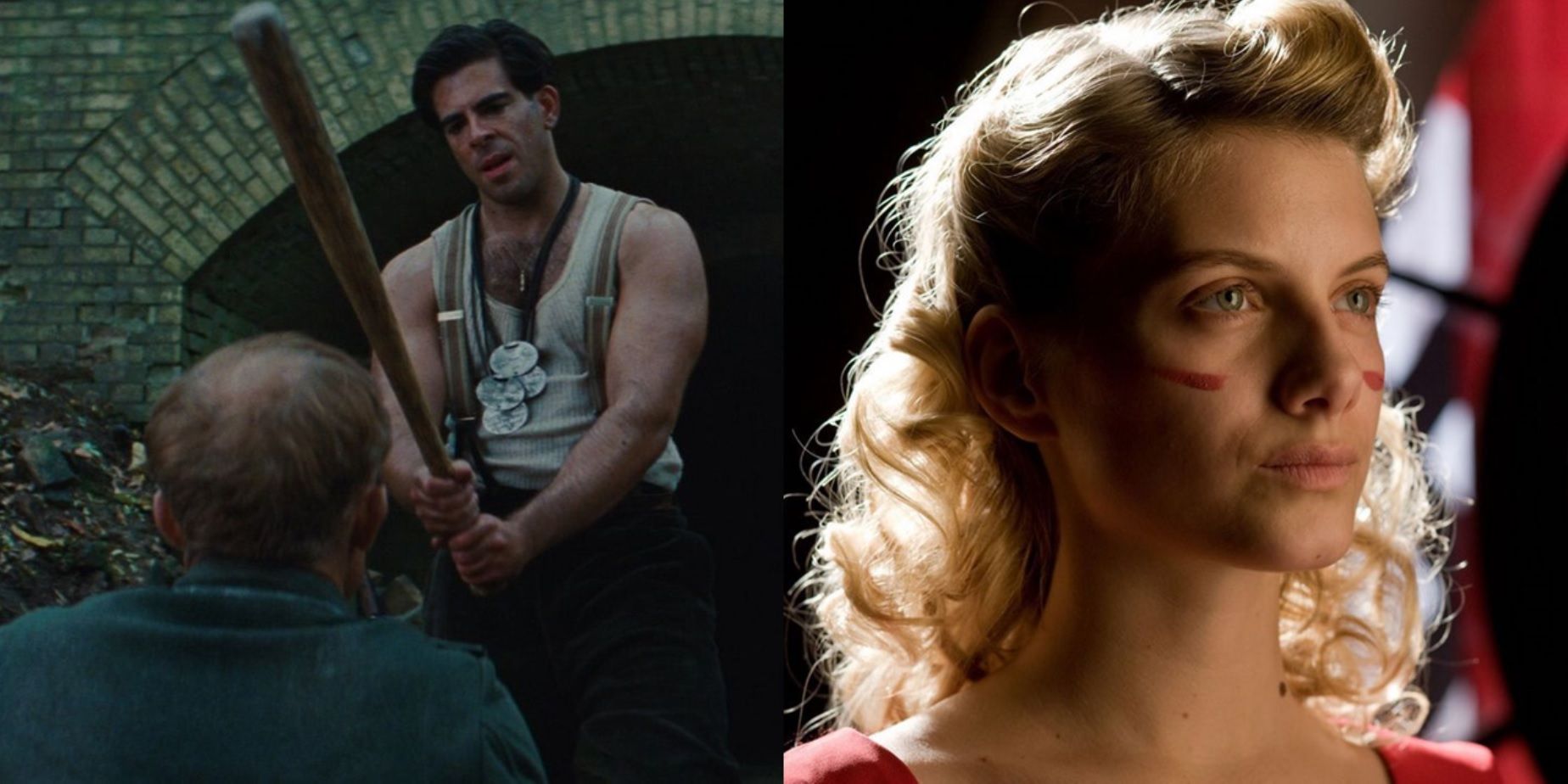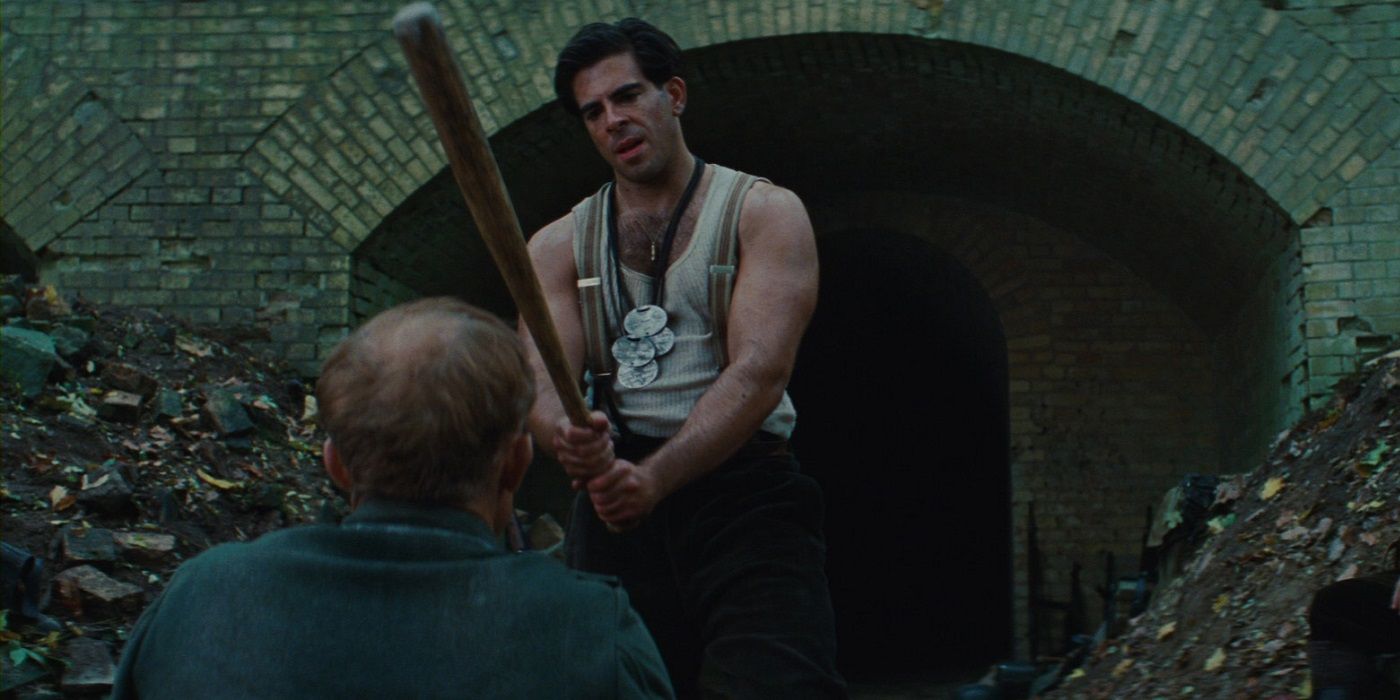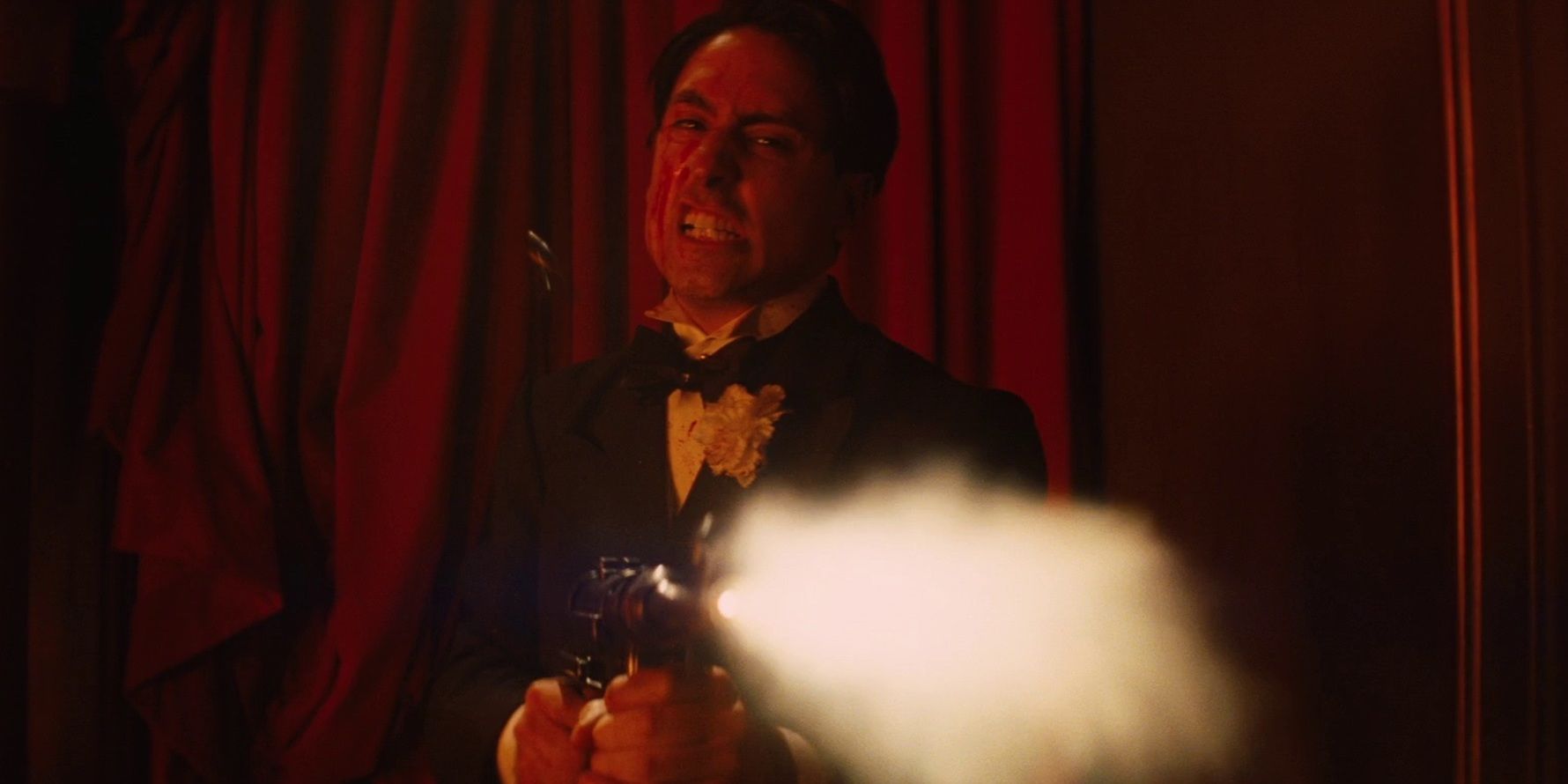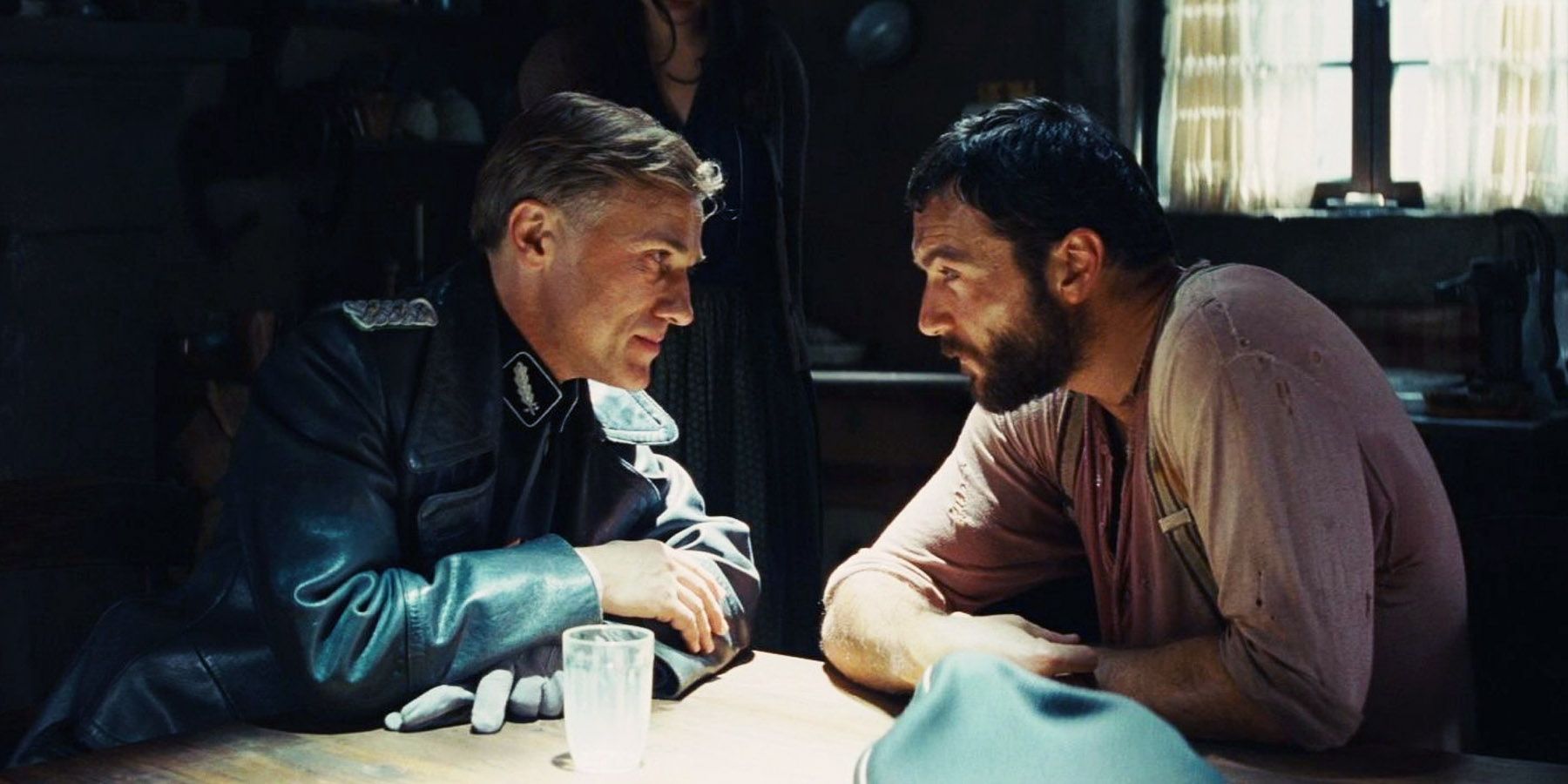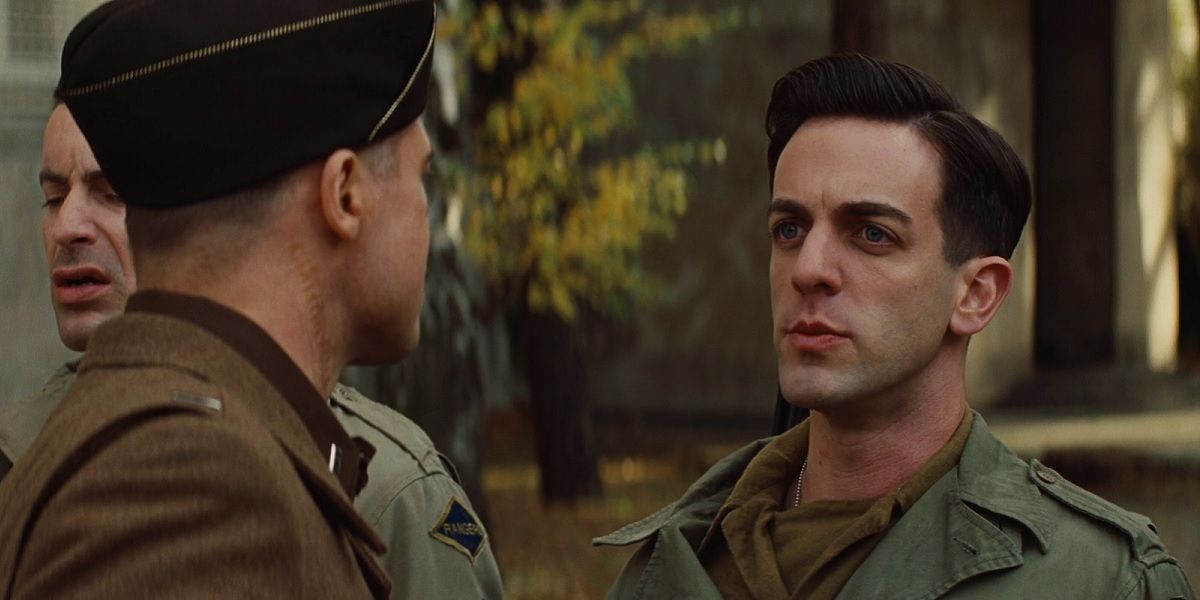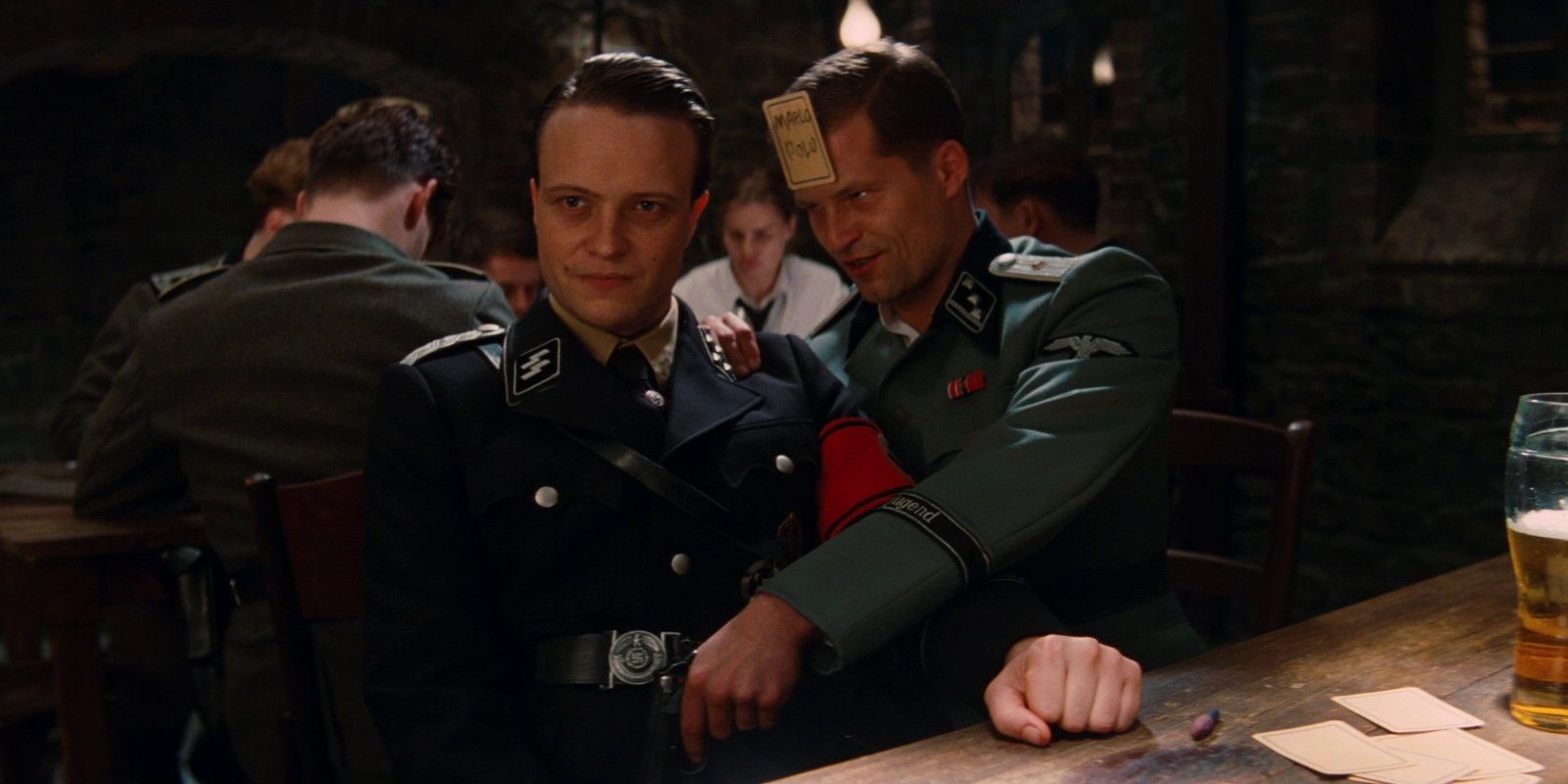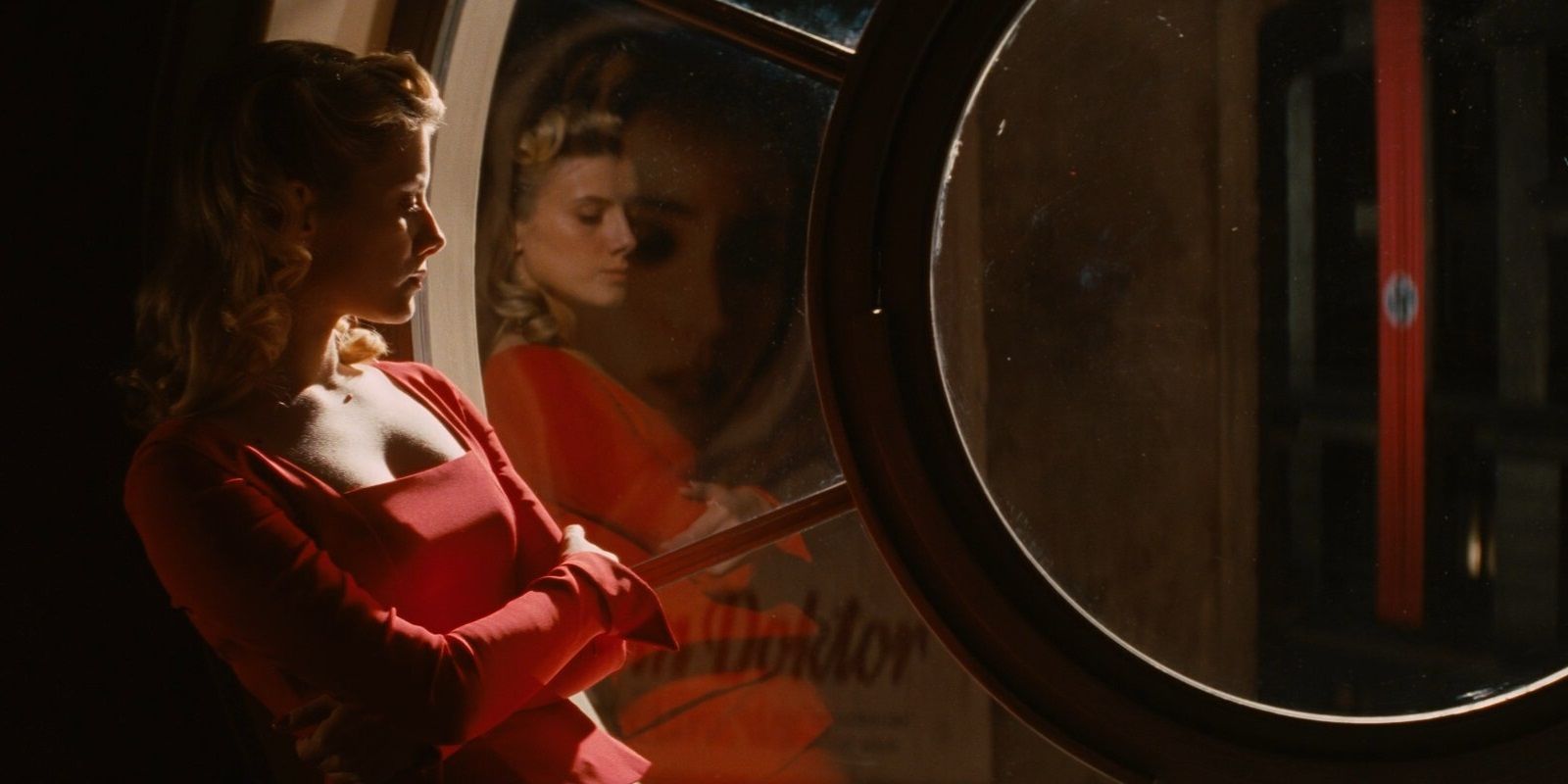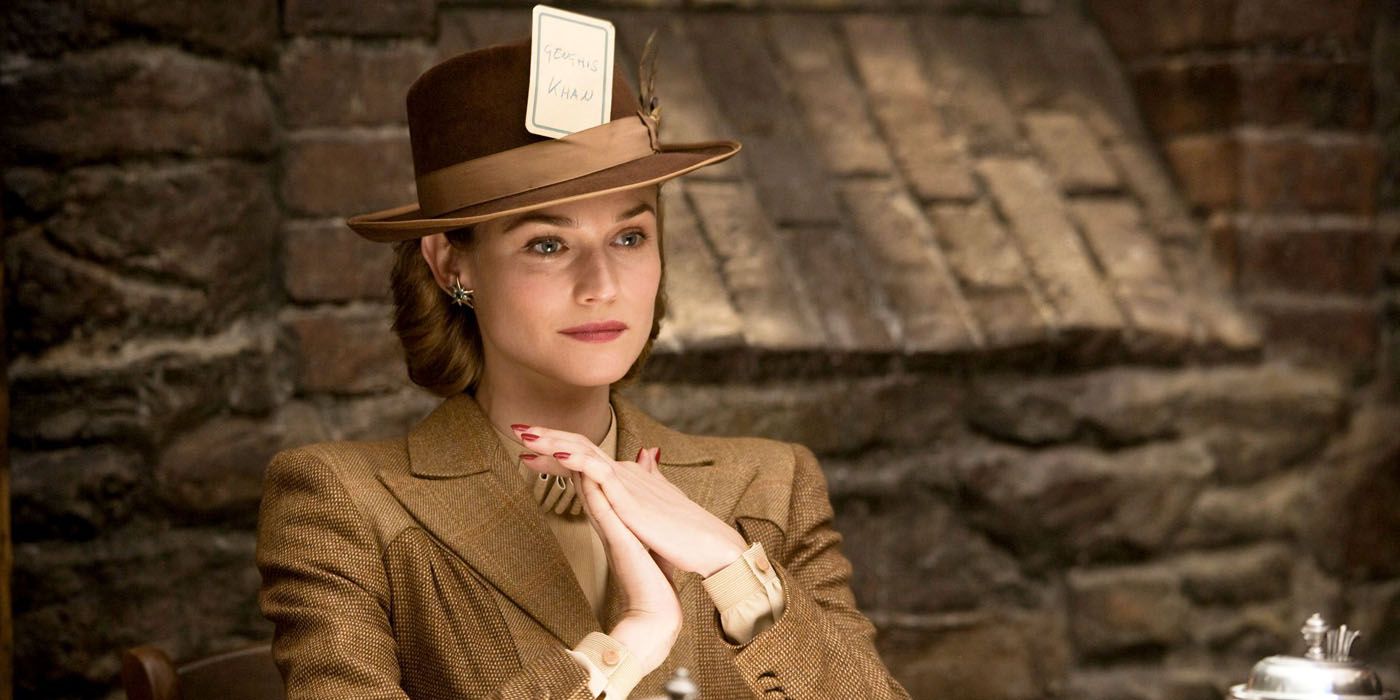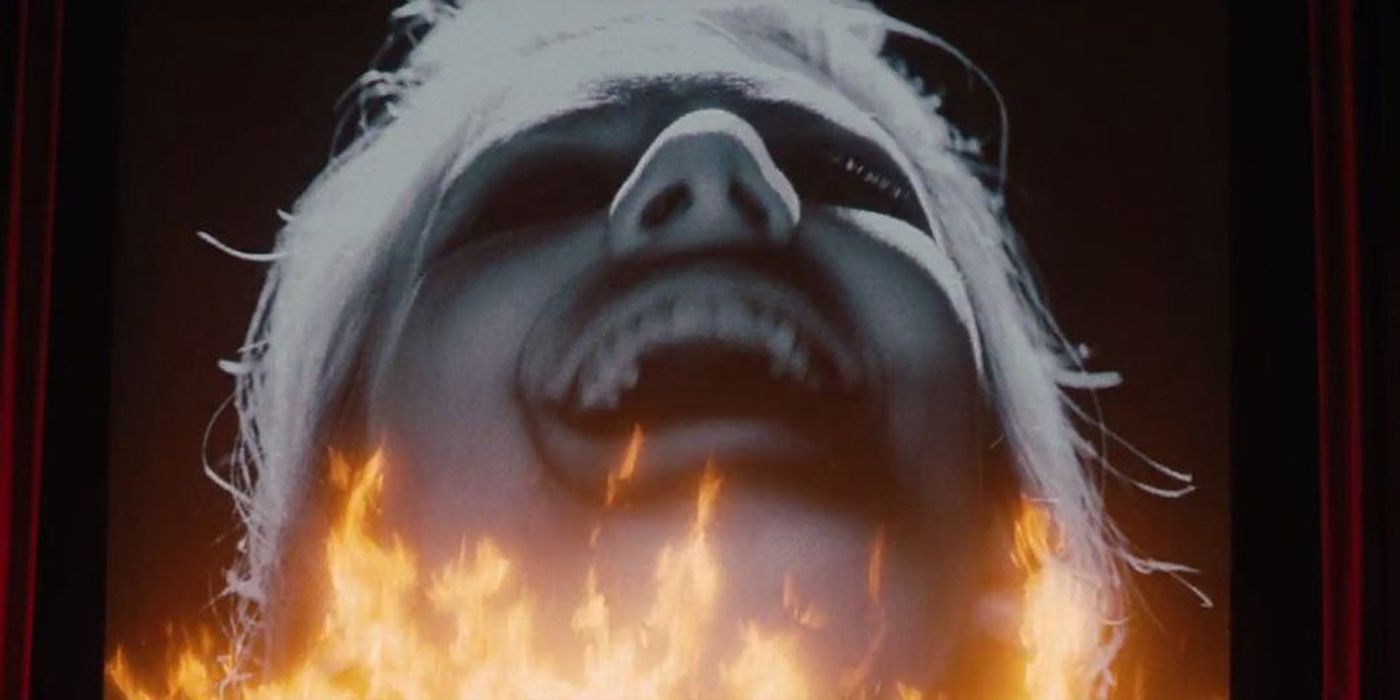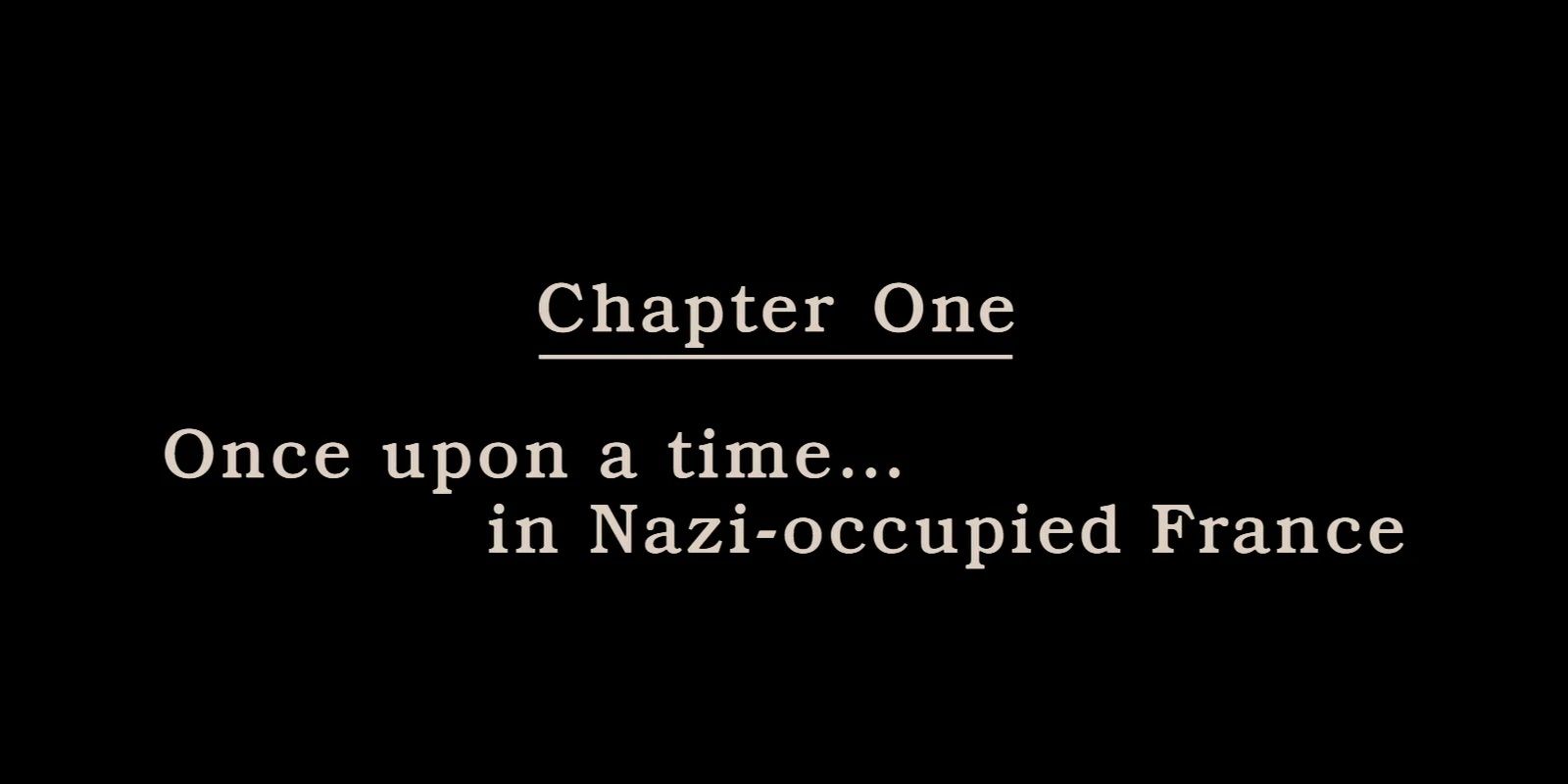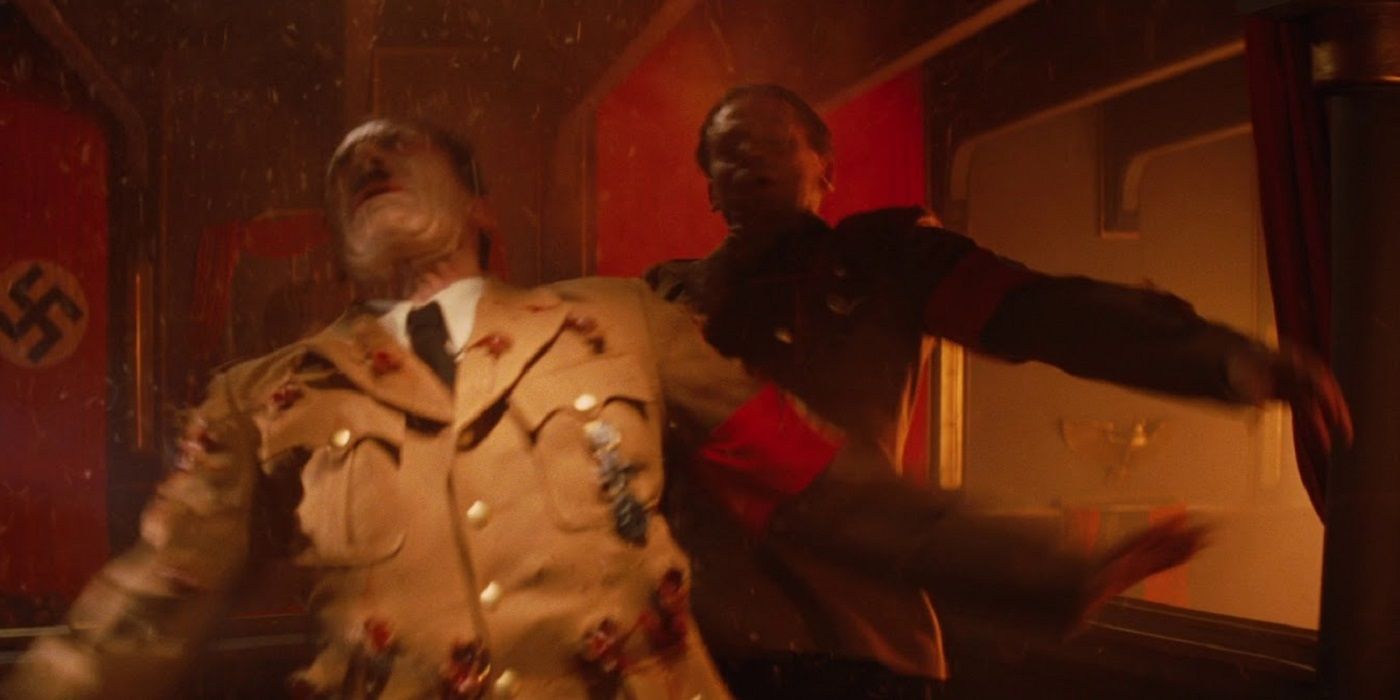After playing in the sandboxes of gangster movies, kung fu movies, and carsploitation movies, Quentin Tarantino gave the war genre a try with his darkly comedic, critically acclaimed WWII epic Inglourious Basterds. In many ways, Inglourious Basterds was a departure for Tarantino. For starters, since all his previous movies had told contemporary stories, it was his first movie with a period setting (and all his movies since have been period movies).
Despite the tonal and stylistic departure from his previous work, Tarantino still filled Inglourious Basterds with many of his familiar directorial trademarks, like dark humor, graphic violence, unwieldy monologues, and even pop culture references, despite the historical setting.
Brutal Violence
The most obvious trademark of Tarantino’s filmmaking is graphic violence, which he includes in his movies – according to the famous clip – “because it’s so much fun, Jan!” Inglourious Basterds is one of the most violent films of Tarantino’s career.
The Basterds cut the scalps off of all the German officers they kill. And as if that wasn’t gruesome enough, Donny “The Bear Jew” Donowitz beats Nazis to death with a baseball bat for the amusement of his fellow Basterds.
Dark Comedy
Tarantino loves to make his audience laugh at things they shouldn’t laugh at, like a karaoke torture scene in Reservoir Dogs or a man getting shot in the face by accident in Pulp Fiction. Inglourious Basterds has a lot of serious moments that aren’t played for laughs, like the tense opening scene, but it also has some of the writer-director’s darkest humor to date.
Martin Wuttke’s turn as Adolf Hitler is a cartoonish portrayal of a real-life genocidal monster. The Bear Jew cracks a baseball joke after beating a German officer to death with his bat. With a big grin on his face, a sadistic Nazi war criminal excitedly cries out, “That’s a bingo!”
Verbose Monologues
From Samuel L. Jackson’s “path of the righteous man” speech to Christopher Walken’s gold watch speech to his own “Like a Virgin” analysis, Tarantino loves to fill his scripts with page-long monologues for his actors to chew on.
There are a couple of classic Tarantino monologues in Inglourious Basterds, like Lt. Raine recruiting the Basterds and detailing their mission, or Col. Landa explaining the difference between rats and squirrels.
Sprawling Ensemble
Tarantino’s movies rarely have just one lead character. His stories tend to revolve around a sprawling ensemble, and Inglourious Basterds is a prime example. Brad Pitt is the A-list movie star front and center on the poster, but Lt. Aldo Raine is backed up by the rest of the Basterds.
On top of that, Shosanna takes the lead of her own storyline, Col. Landa gets a bunch of scenes in the spotlight, and there’s a long detour in a basement bar where some Allied spies are undercover with a German starlet.
Armed Standoff
Armed standoffs have been a staple of Tarantino’s filmmaking since the beginning. The gun-toting gangsters all turn their guns on each other at the climax of Reservoir Dogs. This finale is replicated with Pumpkin and Honey Bunny in the diner at the end of Pulp Fiction.
There’s an armed standoff between the survivors of the basement shootout and the Basterds waiting upstairs in Inglourious Basterds. As Aldo points out, “You know, fighting in a basement offers a lot of difficulties. Number one being, you’re fighting in a basement.”
Borrowing Music From Other Movies
Tarantino didn’t feature an original score in one of his movies until he made The Hateful Eight. Instead, what he usually does is pilfer the scores of existing movies and license them for his own.
Inglourious Basterds utilizes a number of compositions from classic film scores. Its soundtrack borrows tracks from Ennio Morricone’s score for The Big Gundown (for the Bear Jew’s glorious entrance) and Charles Bernstein’s score for White Lightning (to sell the terror of a car full of Nazis arriving at Shosanna’s cinema). David Bowie’s theme from Cat People plays as Shosanna gets ready for the premiere (and applies makeup like warpaint).
Pop Culture References
From debating the meaning of Madonna’s “Like a Virgin” in Reservoir Dogs to discussing the differences between American and European McDonald’s in Pulp Fiction, Tarantino has filled all of his movies with references to popular culture. Inglourious Basterds is no different, despite its historical setting.
Tarantino’s World War II opus contains nods to contemporary pop culture like King Kong and the films of G.W. Pabst. Thematically, the movie examines cinema’s role in the war through the story of a propaganda premiere.
Revenge
Vengeance is one of the defining hallmarks of Tarantino’s storytelling. In Kill Bill, the Bride exacts revenge for being beaten and bloodied by her old colleagues. In Django Unchained, Django exacts revenge for being enslaved and separated from his wife. Inglourious Basterds is similarly anchored by a great revenge story.
Shosanna Dreyfus has a personal vendetta against the S.S. on top of being a Jewish refugee in Nazi-occupied France. In the iconic opening scene, her loved ones are shot dead around her as she hides under the floorboards of a dairy farm.
Chapters
Tarantino has always approached each story more like a novelist than a screenwriter. The first script that he split into chapters was Kill Bill, but he repeated this trope in Inglourious Basterds.
The chapter-based storytelling allowed Tarantino to jump all over Nazi-occupied Europe, switching from perspective to perspective. He later reused the chapter structure in The Hateful Eight.
Alternate History
With Inglourious Basterds, Tarantino established a new stylistic trademark that has gone on to define the back end of his career. The most daring moment in the movie is Adolf Hitler’s historically inaccurate death scene. Hitler doesn’t die in the comfort of a bunker like in real life; he’s shot dead by Jewish American soldiers while a Jewish refugee burns his cabinet alive around him.
Since he killed off Hitler, Tarantino’s movies have been defined by righting the wrongs of history. His next film revolved around an antebellum-era slave taking up arms and gunning down legions of white slavers. His most recent movie saw a TV cowboy, a stuntman, and a pit bull eviscerating the Manson Family murderers before they could get to Sharon Tate.

